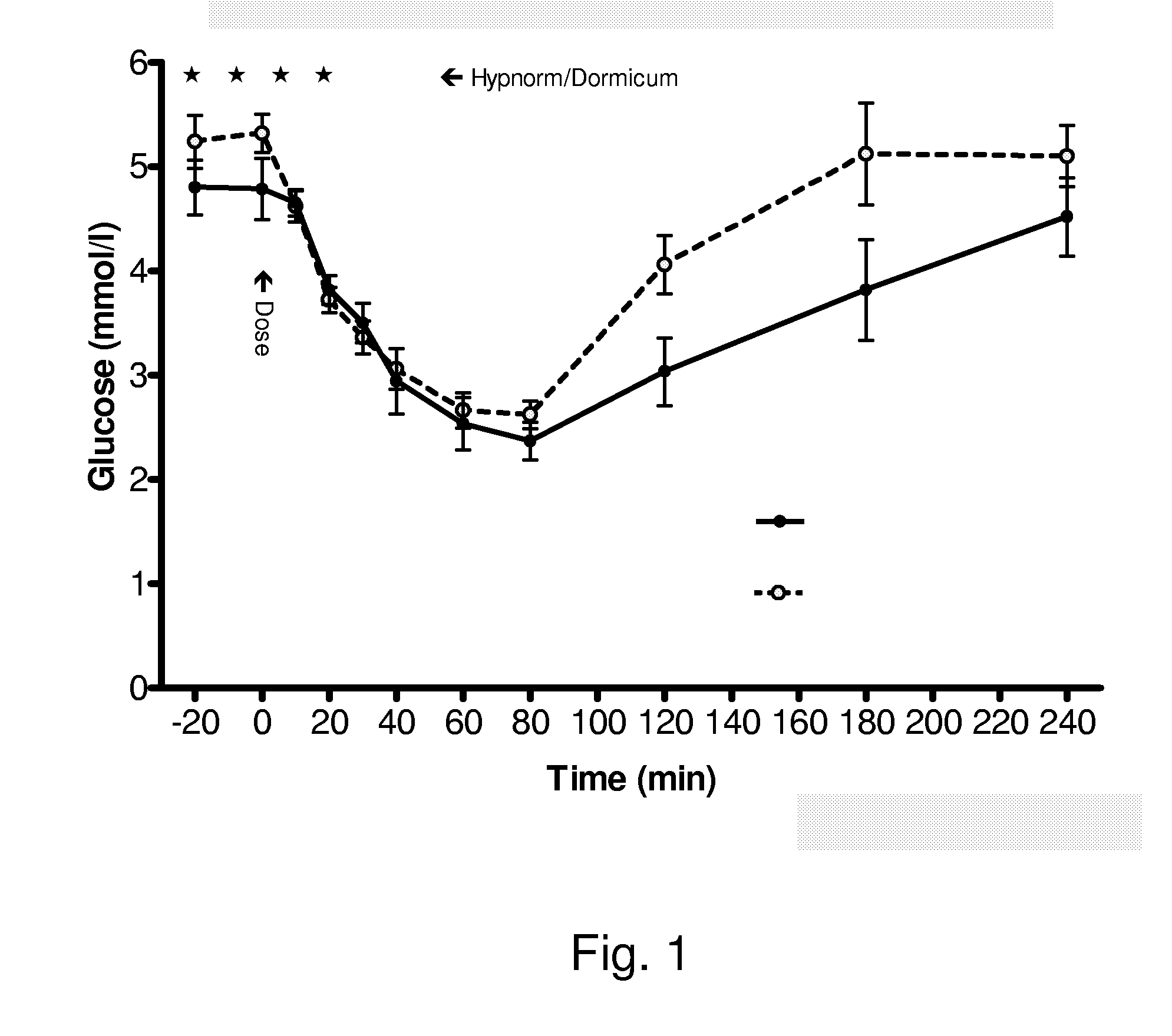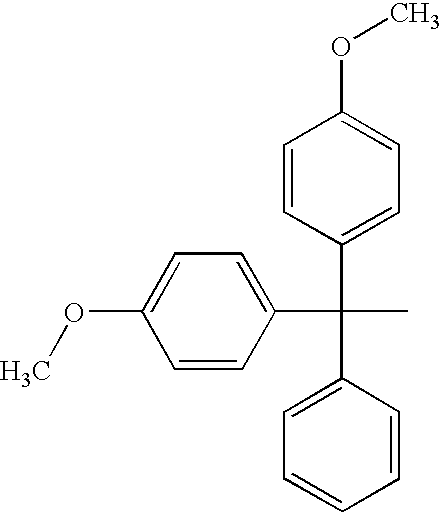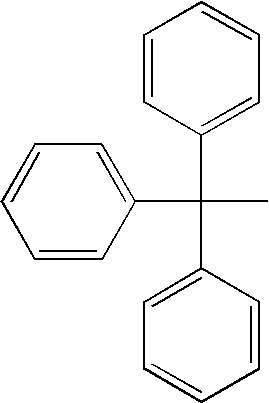Insulin Derivatives Conjugated with Structurally Well Defined Branched Polymers
- Summary
- Abstract
- Description
- Claims
- Application Information
AI Technical Summary
Problems solved by technology
Method used
Image
Examples
example 1
2-[2-(2-Chloroethoxy)ethoxymethyl]oxirane
[0208]
[0209]2-(2-Chloroethoxy)ethanol (100.00 g; 0.802 mol) was dissolved in dichloromethane (100 ml) and a catalytic amount of boron trifluoride etherate (2.28 g; 16 mmol) was added. The clear solution was cooled to 0° C., and epibromohydrin (104.46 g; 0.762 mol) was added dropwise maintaining the temperature at 0° C. The clear solution was stirred for an additional 3 h at 0° C., then solvent was removed by rotary evaporation. The residual oil was evaporated once from acetonitrile, to give crude 1-bromo-3-[2-(2-chloroethoxy)ethoxy]propan-2-ol, which was re-dissolved in THF (500 ml). Powdered potassium tert-butoxide (85.0 g; 0.765 mmol) was then added, and the mixture was heated to reflux for 30 min. Insoluble salts were removed by filtration, and the filtrate was concentrated, in vacuo, to give a clear yellow oil. The oil was further purified by vacuum distillation, to give 56.13 g (41%) of pure title material.
[0210]bp=65-75° C. (0.65 mbar)....
example 2
1,3-Bis[2-(2-chloroethoxy)ethoxy]propan-2-ol
[0211]
[0212]2-[2-(2-Chloroethoxy)ethoxymethyl]oxirane (2.20 g; 12.2 mmol) was dissolved in DCM (20 ml), and 2-(2-chloroethoxy)ethanol (1.52 g; 12.2 mol) was added. The mixture was cooled to 0° C. and a catalytical amount of boron trifluride etherate (0.2 ml; 1.5 mmol) was added. The mixture was stirred at 0° C. for 2 h, then solvent was removed by rotary evaporation. Residual of boron trifluride etherate was removed by co-evaporating twice from acetonitrile. The oil thus obtained was purified by kuglerohr destilation. The title material was obtained as a clear viscous oil in 2.10 g (45%) yield. bp.=270° C., 0.25 mbar. 1H-NMR (CDCl3): δ=3.31 (bs, 1H); 3.55 ppm (ddd, 4H); 3.65-3.72 (m, 12H); 3.75 (t, 4H); 3.90 (m, 1H). 13C-NMR (CDCl3): δ=43.12 ppm; 69.92; 70.95; 71.11; 71.69; 72.69.
example 3
1,3-Bis[2-(2-azidoethoxy)ethoxy]propan-2-ol
[0213]
[0214]1,3-Bis[2-(2-chloroethoxy)ethoxy]propan-2-ol (250 mg; 0.81 mmol) was dissolved in DMF (2.5 ml), and sodium azide (200 mg; 3.10 mmol) and sodium iodide (100 mg; 0.66 mmol) were added. The suspension was heated to 100° C. (internal temperature) over night. The mixture was then cooled and filtered. The filtrate was taken to dryness, and the semi crystalline oil re-suspended in DCM (5 ml). The non-soluble salts were removed by filtration; the filtrate was evaporated to dryness to give pure title material as a colourless oil. Yield: 210 mg (84%). 1H-NMR (CDCl3): δ=3.48 ppm (t, 4H); 3.60-3.75 (m, 16H); 4.08 (m, 1H). 13C-NMR (CDCl3): δ=51.05 ppm; 69.10; 70.24; 70.53; 70.78; 71.37. LC-MS: m / e=319 (M+1)+; 341 (M+Na)+; 291 (M−N2)+. Rt=2.78 min.
PUM
| Property | Measurement | Unit |
|---|---|---|
| Length | aaaaa | aaaaa |
| Length | aaaaa | aaaaa |
| Time | aaaaa | aaaaa |
Abstract
Description
Claims
Application Information
 Login to View More
Login to View More - R&D
- Intellectual Property
- Life Sciences
- Materials
- Tech Scout
- Unparalleled Data Quality
- Higher Quality Content
- 60% Fewer Hallucinations
Browse by: Latest US Patents, China's latest patents, Technical Efficacy Thesaurus, Application Domain, Technology Topic, Popular Technical Reports.
© 2025 PatSnap. All rights reserved.Legal|Privacy policy|Modern Slavery Act Transparency Statement|Sitemap|About US| Contact US: help@patsnap.com



